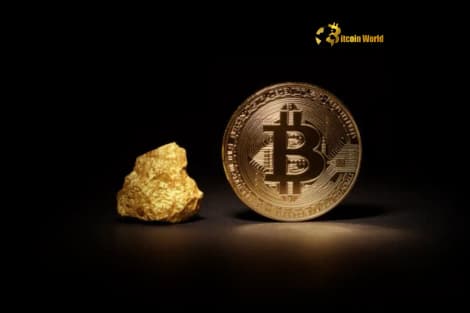What Is Dash
Dash is one of the earliest altcoins that copied and modified the code Bitcoin had with the intention of providing a lot more capabilities and gaining a lot more market traction. It is available on many exchanges. The interesting part about it is that it is actually launched as a fork of Litecoin (LTC), and since it has gone live, it has grown to one of the most popular networks out there.
You have InstantSend, which allowed users to actually be able and transfer DASH without the need to wait for transactions to first be confirmed by the Dash blockchain, and they could send the crypto to special nodes, which are known as the Masternodes, which would essentially provide a service such as locking the funds before they are recorded within the upcoming block.
Then you have features such as PrivateSend, which essentially enabled users to actually send transactions through what is known as a mixing service, where the DASH would be sent to Masternodes, then the Masternodes would mix these with the ones other users are making, and as such the trail would be obscured when it comes to the original transaction.
The interesting part about all of this is the fact that Dash would go even further than all of this and implement a lot more experimental features that can give anyone that owned a certain amount of DASH to participate within the operation of the blockchain before staking protocols even came to get the mainstream appeal they currently have.
The project has MasterNodes, which are servers that are backed by collateral that hold Dash and are fully designed to provide advanced services securely through governance through the usage of Dash's proposal system. MasterNodes provide a second layer service to the network and facilitate the functions such as InstantSend, PrivateSend, and even ChainLocks.
When it comes to the governance system, the treasury of sorts, it distributes 10% of the block rewards for the development of the project through a decentralized way, where it has allowed for the creation of many funded organizations. Among them is the Dash Core Group, as well as the Dash Foundation.
Dash Founders
DASH was actually a creation of Evan Duffield that launched in January of 2014. Furthermore, it was initially known as XCoin, after which it was renamed to Darkcoin, which was a name derived from its privacy features, such as mixing. It was rebranded to Dash, which stands for Digital Cash, in 2015.
Discussing Evan Duffield even further, before creating Dash, he was a software developer specializing in financial products, and he had worked at Hawk Financial Group. he also worked in public relations, where he developed machine learning algorithms alongside specific search engines.
How Does DASH Work
Dash operates through what is known as a proof-of-work (PoS) consensus mechanism. This layer is powered by the miners who have to compete by completing and solving cryptographic puzzles through using hardware in order to create new blocks with the intention of securing the blockchain. In other words, miners can preserve the blockchain's transaction history and prevent what is known as double-spending from occurring As previously mentioned, it took Bitcoin's code and built upon it; however, it is different from Bitcoin due to the fact that instead of taking 10 minutes, here the block time is 2.5 minutes, where miners receive 45% of the DASH mined in each block when compared to Bitcoin, where the miners there take 100% of the BTC that is mined.
Then you have what is known as the MasterNode network. In order for any node to gain the opportunity and actually become a MasterNode, they will have to hold at least 1,000 DASH tokens.
MasterNodes serve several functionalities, such as facilitating private as well as instantaneous transactions, rejecting improperly formed blocks from the miners, and storing a full copy of the blockchain ledger while receiving, as previously mentioned, 45% of the block rewards. They can even vote on how to allocate 10% of the block reward once they are finished with a specific validation.
The beauty of this blockchain is in the fact that just about anyone has the opportunity to propose a new feature or change to the network. The final decisions, however, are made only by the MasterNodes. If yes votes outnumber No votes by more than 10%, a new feature is implemented. DASH is durable, portable, and scarce. It is an entirely digital set.
Discussing the block rewards, approximately 45% of new DASH is awarded to miners, so now you might be wondering, where does the rest of the percentage go? Well, 45% is rewarded to MasterNodes, and 10% goes towards funding future proposals. However, in 2020, for example, a proposal ended up being approved, which changed the ratio of the coins which are awarded to miners as well as MasterNodes from this 50/50 method to 40/60, which slightly altered all of this. However, it proves as an example of what kind of power the token has and what users and MasterNodes can actually do through the usage of the DASH token.
Where Can You Buy DASH
Dash can be bought with FIAT currencies, offers more anonymity through a user-friendly interface, and with fundamental analysis. We can see that it has incentivized nodes that verify each transaction, and it is traded on many exchanges. You can buy DASH with fiat currencies at the current Dash price on many exchanges.
DASH can be bought, sold, or traded on numerous locations, including Binance Futures, Binance, HitBTC, OKEx, ZBCom, Yobit, HuobiGlobal, and others. It is available for purchase or trade throughout various cryptocurrency pairs and has a solid volume which makes it optimal for trading.
Due to its limited supply, once it reaches its maximum supply, which is predicted to occur by the year 2300, it could lead to a heightened price that might make it a worthwhile consideration in the eyes of many.











